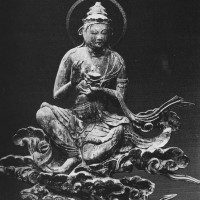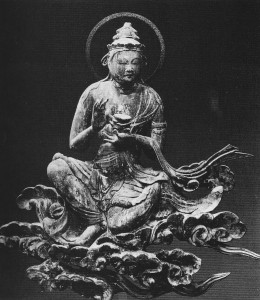
Three Faces of Mindfulness
Mindfulness is all the rage these days, but the skill and the practices of mindfulness are anything but new. In fact, the modern mindfulness movement traces its origins back to some of the very earliest teachings of Gautama Buddha, the founder of Buddhism. Certainly, today’s mindfulness does not look like the practices developed and taught over a forty year teaching career by the Buddha, but the personal subjective experience of mindfulness is probably very similar to that of the monks and nuns of his day.
Mindfulness has various meanings and we might begin by naming the most common ones. The word can be used to describe a view of life. For example, we might point to friends who live very “mindfully,” meaning that they take special care to live in a healthy manner, eating only organic produce and thinking about eco-sustainability when making purchases. They are considerate, thoughtful people. This is an example of mindfulness as a view or way of thinking about life. For some, being mindful means being aware of the fleeting nature of life or of Buddhist ideas like the important idea (to Buddhists) that there is “no self” (no permanent abiding, unchanging self, to be a little more precise). A mindful approach to living is certainly part of the modern mindfulness movement, but it is not the most important part.
Mindfulness often means something entirely different and very specific: it means mindfulness meditation. It is the practice of mindfulness meditation (actually a large collection of different meditations) that is at the core of the mindfulness experience. Yes, it IS important to have a mindful view of living, but what’s far more important to hardcore mindfulness practitioners is the time spent daily in mindfulness meditation. And not just for a few weeks, but as an ongoing practice for your whole lifetime. At its most basic, mindfulness meditation is about developing awareness – awareness of the body, breath, thoughts, and emotions. Mindful awareness of all six senses is the goal. And if you are thinking that there are only five senses, Buddhist thought adds “mind” as a sixth sense organ (while the ear perceives sound, the mind perceives thought). As the practitioner reaches higher levels of practice her awareness can become very strong, even taking a meta-leap into awareness of awareness, sometimes also known as witness consciousness. For those that take up mindfulness as practice, the mindful view or worldview is experienced as a support to their practice, but not the main thing. Mindfulness for them is all about the practice!
But why practice? Why spend all those hours in tortured lotus postures or sitting on butt-numbing chairs? Wouldn’t our time be better spent reading or thinking about how to live mindfully? No! The meditator says. No, there is no substitute for practice. And she might go so far as to suggest that sometimes all that mental activity becomes the main barrier to the goal of practice: mindfulness-as-skill. Monks and nuns have NOT been sitting in meditation all these centuries in the hope of glory in the afterlife. No, the fruits of practice become very real rather quickly for the disciplined meditator. And the main fruit of practice is also known as mindfulness, here defined as a quality of mind or skill. Mindfulness meditation is the single most reliable way to develop the skill or quality of mind experienced as mindfulness. And the subjective experience of mindfulness as skill is so beautiful, so wonderful, that most people who have an experience of it are hooked for life.
What, then, is this skill of mindfulness? Harvard psychologist Dr Ron Siegel defines mindfulness in his book The Mindfulness Solution as “awareness of present experience with acceptance.” That, to me, is an excellent essential definition. Jon Kabat-Zinn, probably the most important contemporary figure in the modern mindfulness movement, defines it as “paying attention in a particular way: on purpose, in the present moment, and non-judgmentally.” Newcomers to mindfulness will want to know more and more could be said, but at a certain point the best thing to do is to give it a try. To, as Ken Wilber once put it rather abruptly, “shut up and meditate.”
If you’re ready to give it a try, I’d suggest a classic starting point: a meditation known as the Body Scan. You can find examples all over the internet, but there is one on my site, under Resources. I hope you’ll give it a try and write me with your impressions!
Here’s to developing mindfulness and enjoying every moment of this precious life! 
– Bill